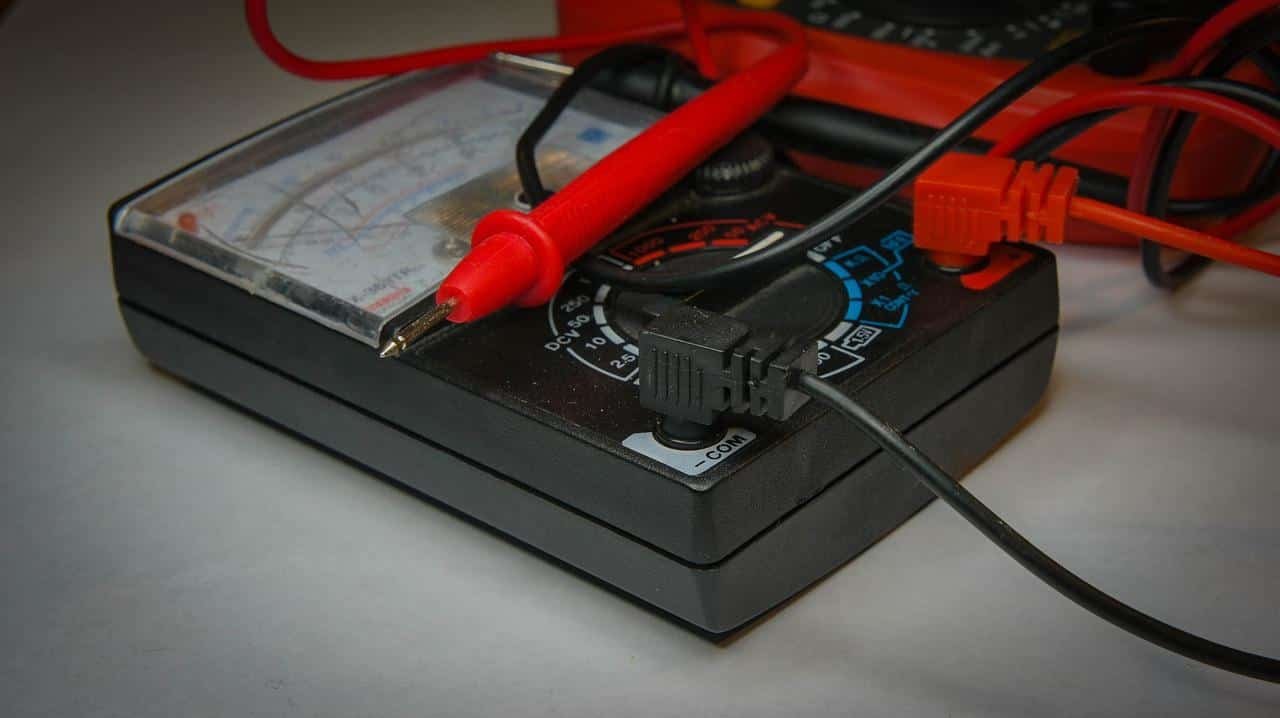Ohmmeter
If you get into any electrical work, you may need an ohmmeter in many situations. This device allows you to measure the resistance of an electronic or electrical circuit. It will come in handy very often. An ohmmeter is a measuring instrument that measures the electrical resistance of an electrical component or circuit. The unit of measurement is the ohm, denoted Ω.
What is an ohmmeter?
The ohmmeter is a device that looks a bit like a multimeter and allows you to measure the resistance of a load. It is widely used in electronics or in the context of electrical work. It measures electrical current in ohms and allows you to spot electrical problems in the home. The ohm is the measure of resistance in an electrical circuit.
Formula
R = V/I.
If a problem involves the factors affecting the resistance of a conductor, R can be calculated using R = ρL/A. If it involves resistance and temperature, R can be found using R = R0 (1+αΔT). The SI unit of resistance is the ohm (Ω)
What is an ohmmeter used for?
In most uses, the ohmmeter is used to test an appliance motor, but also a fuse or even an iron. The goal is to know if they are grilled or not grilled.
Open: means that the circuit is open: in this case the ohmmeter displays a 1 in the display panel. The value exceeds the range, it means that the load is good to replace, a fuse for example. An open circuit has a large resistance.
Not burnt out: the circuit is then closed and the ohmmeter then displays a value close to zero. This means that the fuse or motor is still good.
It offers the possibility of checking that a device has no electrical leakage to ground or that there is no short circuit. The current continuity test is performed with a beep indicating its passage.
How does the ohmmeter work?
It works simply by sending a small current through a circuit using two metal keys, which allows it to measure its resistance. It needs to be configured to give you a set measurement, and then you can do the actual measurement.
You start by disconnecting the load from the circuit to be measured and then you place the ohmmeter across its terminals. The device, through its internal battery, circulates a very low current in the load and measures the voltage, which makes it possible to quantify its resistance.
Operating principle
Two methods can be used to measure the value of a resistor:
Current measurement with a voltage generator
Measurement of a voltage with a current generator.
How do you use your ohmmeter?
The device must be properly powered. It has a small battery or batteries that may or may not be already installed. The power supply is sometimes provided and you will need to install it. Some devices can be powered by a small transformer.
Types
1. Series
The component which we want to measure can be connected with the meter in series. The resistance value can be calculated through the shunt resistor R2 using D’Arsonval movement which is connected parallel. The R2 resistance can be connected in series with the battery as well as R1 resistance. The measuring component is connected in series by the two terminals A as well as B.
2. Shunt
This can be done whenever the calculating component is connected in parallel with the battery. This type of circuit is used to calculate the low-value resistance.
If the resistance value of the component is zero then the current in the meter will become zero. Similarly, when the resistance of the component becomes vast then the flow of current through the battery and the needle illustrates the full scale deflection in the direction of the left. This type of meter do not have a current on the scale in the direction of left as well as the infinity spot in their right direction.
3. Multi range
The multi-range ohmmeter range is very high, and this meter includes an adjuster, and the range of a meter can be selected by an adjuster based on the requirement.
You can use a meter to calculate the resistance below 10 ohms. Then you need to fix the resistance value to 10 ohms. The measuring component is connected with the meter in parallel. The resistance magnitude can be decided by the deflection of the needle.
There are different types of ohmmeters (analog, digital and micro)
1. Analog or mechanical: they are quite simple in design, so they are inexpensive to buy. They can measure low resistances (0 to 10 Ω), but also high resistances (0 to 10,000 Ω). They have the same measurement ranges, but the advantage is that it has an automatic function for the choice of the range. Just plug it into the circuit and then it adjusts itself.
2. Digital: these new generation devices are intuitive. They display the resistance value of the measured body directly on the LCD display screen. This type of ohmmeter has many features:
- Body resistance measurement after DC/AC circuit current analysis.
- Evaluation of the conductivity of a component by measuring the voltage.
- It has the possibility to switch between the different ranges offered.
- Precise indications on the selected range.
- Measurement according to several types of resolution.
3. Micro-ohmmeters: they are designed to detect resistances of only a few tens of Ohms. The level of precision can even approach microohms. These are mostly digital devices. They integrate:
- Seven measurement ranges
- Three Selection Modes
A digital screen - A rechargeable battery
- Voltage presence detection
- A maximum continuous test current of approximately 10 amps
Excercises
If an ohmmeter connected to across a closed switch will display around:
A) 0 ohms
B) 1k ohms
C) 100k ohms
D) 1000k ohms
Answer: 1. 0 ohms
If an ohmmeter connected across an open switch will display:
A) 0 ohms
B) 100 ohms
C) 50 kohms
D) 0L
Correct answer: 4. 0L
Because 0L indicates very high (out of range of ohmmeter) or open loop. An open-loop has infinite resistance.
If a series ohmmeter circuit uses a 3 V battery and a 1 mA meter movement. What is the half scale resistance for this movement?
A) 3 kO
B) kO
C) kO
D) 6 kO
Answer: A
Sources: PinterPandai, Elprocus, Circuit Globe
Photo credit: Spoot via Pixabay



